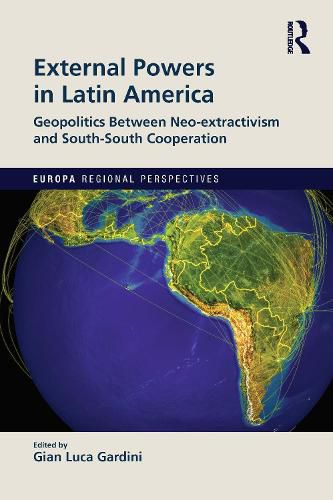Readings Newsletter
Become a Readings Member to make your shopping experience even easier.
Sign in or sign up for free!
You’re not far away from qualifying for FREE standard shipping within Australia
You’ve qualified for FREE standard shipping within Australia
The cart is loading…






This book examines the role of external powers in Latin America in the 21st century. Non-traditional partners have significantly increased their political and economic engagement with the continent. Five key questions arise: why has this surge taken place; when has it happened; in which regions and sectors is it mostly felt; what is the Latin American perspective; and what are the actual results? The book analyses 16 case studies: the United States, the European Union, China, Russia, Japan, Canada, India, Turkey, Iran, Israel, South Korea, Taiwan, Indonesia, the ASEAN countries, South Africa and Australia. The spectrum of existing explanations in the literature spans from neo-extractivism to South-South cooperation. This volume places them in context and proposes a more multifaceted approach, stressing a combination of systemic factors and internal dynamics both in Latin America and in the external partner countries. Geopolitics still matters and so do nation states, their interests and leaders. Ultimately, this surge in engagement has largely reproduced past patterns. Are new partners that different from the old ones?
$9.00 standard shipping within Australia
FREE standard shipping within Australia for orders over $100.00
Express & International shipping calculated at checkout
This book examines the role of external powers in Latin America in the 21st century. Non-traditional partners have significantly increased their political and economic engagement with the continent. Five key questions arise: why has this surge taken place; when has it happened; in which regions and sectors is it mostly felt; what is the Latin American perspective; and what are the actual results? The book analyses 16 case studies: the United States, the European Union, China, Russia, Japan, Canada, India, Turkey, Iran, Israel, South Korea, Taiwan, Indonesia, the ASEAN countries, South Africa and Australia. The spectrum of existing explanations in the literature spans from neo-extractivism to South-South cooperation. This volume places them in context and proposes a more multifaceted approach, stressing a combination of systemic factors and internal dynamics both in Latin America and in the external partner countries. Geopolitics still matters and so do nation states, their interests and leaders. Ultimately, this surge in engagement has largely reproduced past patterns. Are new partners that different from the old ones?